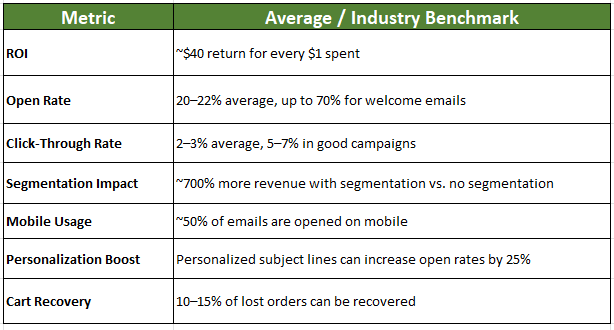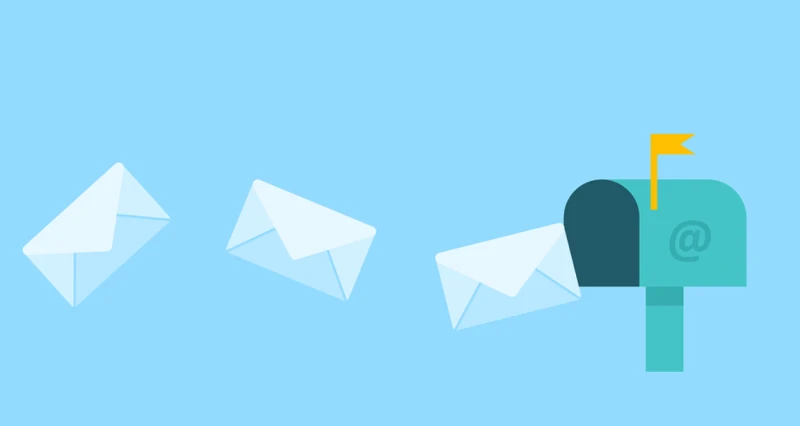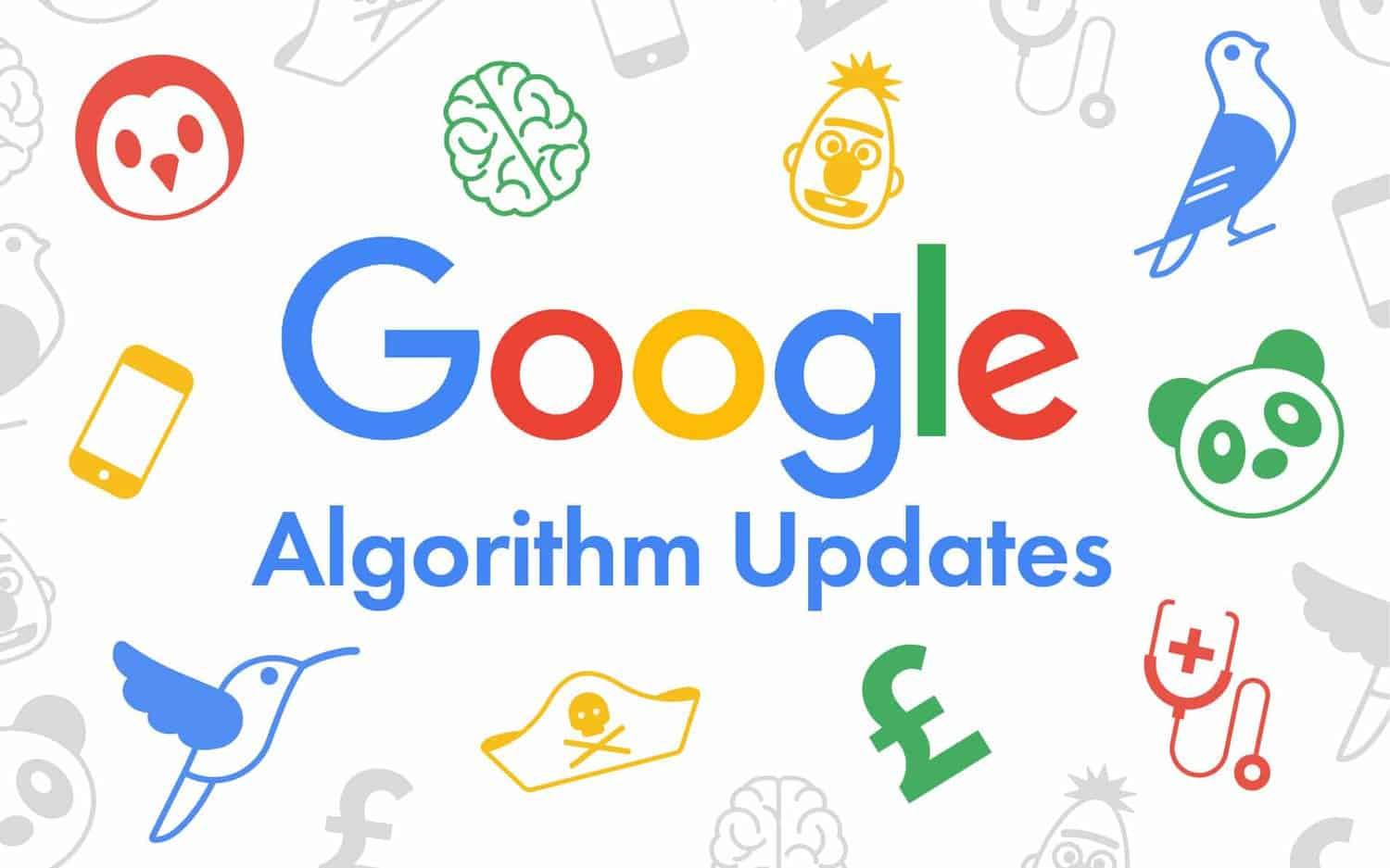Want More SEO Traffic?
Get expert tips to boost your SEO and grow your website traffic!
A Beginners Guide On Email Marketing

You'll often hear people talking about email marketing, and the funny thing is, most of the talking is done by those who aren't doing anything in email marketing. Because those who are doing it aren't talking — they're just roaring.
Today, we are going to try to cover everything — whether true, false, or just rumours — about email marketing. The goal is to break the fear that's been created around it and help people truly understand some ways or concepts that can reveal the real potential of email marketing.
Because, as a technology, email marketing is brilliant. It doesn't even come close to other marketing services like Search Engine Optimization, Social Media Optimization, Google Ads, or Social Media Marketing.
I'm not saying that Email marketing services are everything or the ultimate solution, but the way it has been underrated — it's not a small thing either.
Many people don't understand email marketing because they apply a trader's mindset to it.
But email marketing is much bigger than just lead generation or sales generation.
Email marketing is that marketing channel that has the power to carry everything together — from communication to branding, branding to trust-building, and trust to establishing a full inbound business process.
It is neither a small thing nor a joke. The only condition is that you should know how to do email marketing.
Because, as humans, we have a saying: "If someone doesn't know how to dance, they blame the floor"
The problem is, we don't take the time to understand things ourselves, and then we blame technologies like email marketing.
I've heard many business owners say that SEO don't work, or they don't get results. But if you ask them what technical or project management questions they asked before hiring a digital marketing agency — believe me — most of them go blank.
They didn't even know they were supposed to ask questions.
So, don't blame the technology for your shortcomings. First understand the process, then execute.
What is Email Marketing?
Email marketing is a technology through which you directly communicate with your audience. The term "email marketing" is something I don't fully agree with, because email, calls, and WhatsApp — these are channels of communication, not of marketing. That's why I prefer to use the word "communication" instead of "marketing."
Just like real love doesn't need to be expressed in words — if you love someone, it naturally shows — similarly, if you're approaching email marketing with the mindset of "doing marketing," then things will never truly work. You need to do it with the mindset that you want to talk to your audience. You want to communicate.
Email marketing not only gives you the facility for direct communication, but also lets you set up automations and funnels that help achieve your business goals — whether that's lead generation or driving sales.
Through email marketing, you get the opportunity to build trust with your audience. You get the chance to make a relationship.
By sending emails, you educate your audience, tell them about the best use cases of your product, explain the unique selling points of your services — you tell them why you are the best and why you even exist in the market.
With your email marketing automation system, your audience continuously receives emails, which helps you stay in their minds. The repeated appearance of your emails in their inbox over time enables you to become a brand. Even if you don't see immediate benefit on day one, once everything is properly set up, it starts delivering results.
Email marketing is not something you do once and then lie back. You need to sit down daily, understand what's happening, analyse the data, and adjust your strategy accordingly. There's a lot to consider. But email marketing truly is a technology that is free from the algorithms of Google, Meta, Microsoft, or any third party. So once your email marketing system is built, in the long run, it only brings benefits.
Benefits of Email Marketing
- Fully Owned Audience – The most beautiful thing I find about email marketing is having ownership over your audience. As an experienced digital marketing person, I can tell you that having this level of control gives you a different level of peace of mind.
Many times, while doing SEO for a website, an algorithm update happened, and my website traffic went down or impressions declined. And sometimes, after publishing content on social media, I didn't get the reward I had expected due to their dynamic algorithms, which often made me feel bad, even frustrated.
But email marketing gives the peace of mind that there is no interference from any secondary platform over the audience, and I don't have to live in fear of any algorithm. I can communicate peacefully with my audience. - Automation & Scale – No matter what business it is in the world, everyone wants to grow and move forward. But one thing that always troubles them is the limitation of resources.
The concept of automation and scale in email marketing is extremely fascinating because you only have to design the process, system, and flow once — and boom, the magic happens. Whether you have 2 emails, 2,000, or 200,000, it doesn't make a difference except for the cost of the package from the platform.
Everything keeps running without stopping and without getting tired. So, email marketing is a truly beautiful thing when it comes to scalability and automation. - Personalisation – All email marketing platforms, whether it's Mailchimp, Brevo, or ActiveCampaign, theses three most used in the world of email marketing — and many others, allow you, during template or campaign design, to dynamically fetch subscriber details like their first name or last name in automation.
So, whenever your user receives an email, they see their name in the subject line and in body content at multiple places. It makes them feel the email is sent specifically for them. Personalisation helps you to connect with user in more effectively. - Builds Long-Term Customer Relationships – When your customers see you repeatedly in their inbox, that Gmail notification that pops up every time your email arrives reminds them of you. Over time, people start remembering your business name.
You move from their inbox into their mind, much like how we remember many brand names simply because we've seen them repeatedly — even when we didn't have much to do with them initially. With email marketing, you can build good relationships with your audience. - Drive Repeat Sales – You might find it hard to believe, but it's true that when people get to know you and start liking you, they often end up buying from you again.
For example, many times we explore products on Amazon by clicking the links from emails Amazon sent us, without realising that this time we came to Amazon through email marketing.
Often, when we add something to the cart on an e-commerce platform and leave without purchasing, the brand sends us reminder emails saying that our purchase isn't complete yet. Isn't that cool?
Imagine if you could do the same for your customers — don't you think repeat sales could happen? Or if you run a service business, you could generate leads. You could even sell your courses through email marketing. - High ROI – Although it's not very easy to tell the exact return on investment, because cost is a very dynamic and subjective factor.
according to people who do email marketing, on average, they earn ₹30–₹40 for every ₹1 spent. So, it's a highly effective marketing tactic that drives a great ROI.
How to Build Your Email List
One mistake, or rather a trick, that people often do — which you should not do — is to take shortcuts. Move forward by working hard like a good human being and following authentic ways of getting people to subscribe to your emails. Don't just buy bulk data from somewhere and start blasting emails. Instead, do something that makes people willingly submit their details to you, and then you can email them. So, let's talk about some easy ways to build your email list.
- Lead Magnet - This has been the best way so far to collect emails. The idea is that you create something valuable that solves a problem for your audience base. You need to design and deliver such a thing to your users, and the magic will happen — whenever they see that you are providing something that solves their problem, they will submit their details on your platform.
You can deliver content in any form to solve your users' problems and earn their trust. You can create a short course, give them a checklist, or provide an eBook that serves as a detailed guide. Sometimes, businesses even lure people with exclusive discount coupons, and people end up subscribing. - Sign-Up Forms on Website - It's not like people don't visit your website; actually, people do. Suppose you are serious about your business marketing and online presence, and you have reached the stage where you want to do email marketing. In that case, you also need to understand that — whether few or many — the people visiting your website are potential form-fillers. You need to make all the contact forms on your website easy to fill out and ensure they are working properly.
Alongside, you can create some dynamic forms to grow your subscriber list faster, such as having a contact form automatically appear after a few seconds (e.g., after 3 seconds) or after the user scrolls 50% down the page. Also, connect those forms directly to your email marketing platform so that as soon as someone fills the form on your site, their details are sent to the tool, which then triggers your workflow automations and starts delivering your designed content to your users. - Social Media Campaigns - You might be surprised to know that even today, social media campaigns are one of the biggest weapons for building an email marketing list.
Whenever you run ads and get your users or targeted audience to fill a form, they submit their contact details — whether you collect those details through the social media platform's in-built forms or through landing pages you created. The job gets done in both contexts. You just need to automate this data collection process so that the submissions from social media campaigns automatically reach your email marketing platform.
To build this type of automation, you can use software like Zapier or Pabbly Connect as per your convenience. I have often seen people building email lists by running free webinars or free workshop campaigns, and this is quite effective. - Collaborate with Influencers - In the market, influencers often generate a lot of value in their audience's lives. As a business, if you can connect with an influencer who gives you an opportunity for cross-platform promotion, or if you can create something that can be promoted through the influencer's platform, then you will get some subscribers. And the best part is that these people are giving you their emails willingly, with their consent — not because you are forcing them.
- Collect Emails Offline - It often happens that when we go out to places where events or workshops are being held, we get a chance to meet people, and there is a networking environment. Many times, we exchange visiting cards with each other. You can use these cards to build an email list — then upload this list to your marketing software and start sending emails to these people.
Types of Email Marketing Campaigns
Many different types of email campaigns serve a purpose. Below are some of the most common:
- Welcome Email - Welcome emails are sent to new subscribers, introducing your brand and what they can expect. They help set the tone for what future communications will be and include information like any special offers or useful resources.
- Promotional Emails- Promotional emails announce sales, discounts, or other limited-time special offers. These emails are meant to provoke instant action and increase immediate revenue.
- Newsletter Emails- Newsletter emails are more about providing continuing value with curated, updated, and insightful content opposed to promotional emails like blog posts or links to articles. But enliven your newsletter emails by adding tips or other information that your audience would like.
- Transactional Emails - Transactional emails contain information that users expect after taking a certain action, such as a purchase or registration. Examples are: order confirmation, shipping status, password reset, etc. You can build trust with your subscribers by providing the information they expect, as well as offering a better user experience.
- Event Invitations and Reminders - Get it out so it is most likely that users will engage, especially if regarding a webinar or a product launch, or even a live event. Get them to register, then send reminders sending the details you want them to generally see.
Email Marketing Stats You Should Know
Although no marketing activity is completely bad or good, each has its own important role and unique benefits.
However, in this world of pros and cons, it's essential to recognise that every campaign has specific parameters centred around ROI. And there's nothing wrong with it — after all, anyone who invests money obviously wants some return. So, in between all this, we should understand a few key metrics of email marketing so that, on this basis, we can analyse the financial in and out.
So, in between all this, we should understand a few key metrics of email marketing so that, on this basis, we can analyse the financial in and out.
- ROI - Although it's not a fixed figure, according to online surveys from different websites, email marketing generates almost $40 for every $1 invested, which is a huge return.
But this doesn't mean you should forget all the factors and rush to make money. You also need to understand the basics of email marketing. You cannot ignore fundamentals in the race for ROI.
In fact, the truth is that you will only achieve your desired best possible return when you follow all rules, regulations, and policies, and implement best practices. - Open Rates - You will often hear that nowadays, no one really checks emails, and email marketing is not worth it. But the truth is, if you are a legitimate business and follow white-hat email marketing tactics to execute campaigns, then generally an open rate of 20–22% is achievable.
For welcome emails, it can even go as high as 70%. It also boosts CTR, benefiting both your website and your business, while also enhancing your branding.
So, if you're getting even a 17% or 20% open rate, that's not bad. But your emails should provide promising value so that people feel like opening and reading them seriously.
Through your email marketing campaigns, always add value to people's lives; avoid irritating them.
- Click-Through Rates (CTR) - Many businesses want clicks at any cost, and probably leads too — for them, email marketing becomes very crucial. On average, CTR usually falls around 2%–3%. In really good conditions, CTR can even reach 5%–7%.
But whatever you get, what's wrong with that? It's still an achievement. - Segmentation Impact - One thing you need to understand is that you cannot herd everyone with one stick (an old saying). In other words, you cannot send the same type of email to all your audience.
If you segment your audience — which you should — then you can almost earn 700% more revenue compared to no segmentation.
Create segments based on people's behaviour, demographics, and interests, then start sending personalised campaigns. You'll find yourself just thrilling in the market. - Mobile Usage - You need to quickly realise that more people use mobile devices rather than computers. That's why, as of today, almost 50% of emails are opened on mobile devices.
So never underestimate mobile usage. Always design your emails to be mobile optimised. - Personalization Boost - You need to follow one very simple thing — automation. By doing so, you can personalise both the content and subject line of your emails.
It increases user interest. People feel more connected when they see their own name in the email, and your open rates can increase by up to 25%. - Cart Recovery - It is a huge pain point, especially in the eCommerce industry. Many people who sell products online often face this — at the last moment, customers get distracted and forget to place the final order.
Because of this, many business owners lose sales. That's where abandoned cart campaigns come in — they can recover about 10%–15% of lost orders, which is pretty amazing.
It's a simple automated process — if someone forgets to complete their order, reminder emails are sent to them repeatedly. That way, you'll never miss a sale and can at least cover 10% of the sales recovery.
Challenges in Email Marketing
Email Marketing Tools and Platforms
To assist you in getting started, feel free to look into one of the following platforms:
- Mailchimp – A good resource for beginners with a free plan and a more gentle learning curve.
- ConvertKit – A solid resource for creators and bloggers
- ActiveCampaign – A more robust automated marketing platform and strong CRM.
- HubSpot Email Marketing - HubSpot's marketing platform is good for organisations using HubSpot's CRM platform.
The platforms mentioned do include features such as email templates, automated workflows, audience segmentation and performance data.
Email Marketing Tips
Conclusion
Email marketing is far from over; it remains one of the most valuable, cost-effective, and impactful ROI opportunities available to organisations today. With the right tools, strategy, and content, you can create long-lasting, long-term relationships, grow your audience, and accomplish your marketing goals.
Whether you're a start-up, a small business with a couple of full-time employees, or a large corporation, when it comes to opportunities as a marketer, email is unrivalled among the digital marketing channels. Now is the time to start building your email list, and all signs point to an active and engaged relationship that is purposeful.
Want More SEO Traffic?
Get expert tips to boost your SEO and grow your website traffic!




Leave a Reply
Comments 0